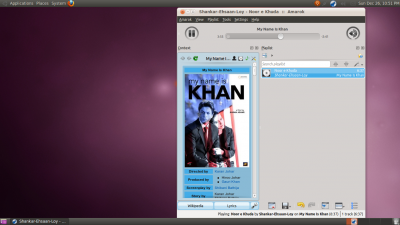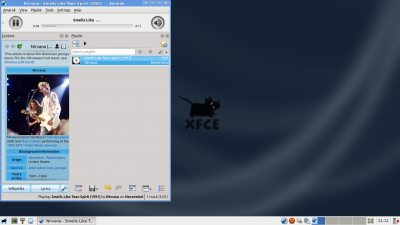Amarok/Manual/Various/AmarokOnOtherPlatforms/NonKDE Desktops/en: Difference between revisions
(Updating to match new version of source page) |
(Updating to match new version of source page) |
||
| (One intermediate revision by the same user not shown) | |||
| Line 56: | Line 56: | ||
}} | }} | ||
[[Category: | [[Category:Amarok2.8]] | ||
[[Category:Multimedia]] | [[Category:Multimedia]] | ||
[[Category:Tutorials]] | [[Category:Tutorials]] | ||
Latest revision as of 16:24, 4 July 2013
Amarok on Non-KDE Desktops
Although Amarok is one the most well-known KDE applications, it can run on other desktop environments too.
This section shows how Amarok can be used on non-KDE Linux desktops. These are examples; there may be more.
GNOME

To configure the proxy for Amarok on GNOME, modify and add this to ~/.kde/share/config/kioslaverc
[Proxy Settings][$i] ProxyType=1 httpProxy=http://username:password@proxyserver:port/ httpsProxy=http://username:password@proxyserver:port/ ftpProxy=http://username:password@proxyserver:port/
Enlightenment

The Amarok systray icon does not work by default with E17. So, one should disable the from in Amarok's preferences.
XFCE

To launch Amarok faster, enable by going into and checking the option.
Fluxbox

If Amarok is taking to long to load, add
exec kdeinit
to ~/.fluxbox/startup.
LXDE

In case Amarok starts slowly in LXDE, you can add to the startup applications using the command.
